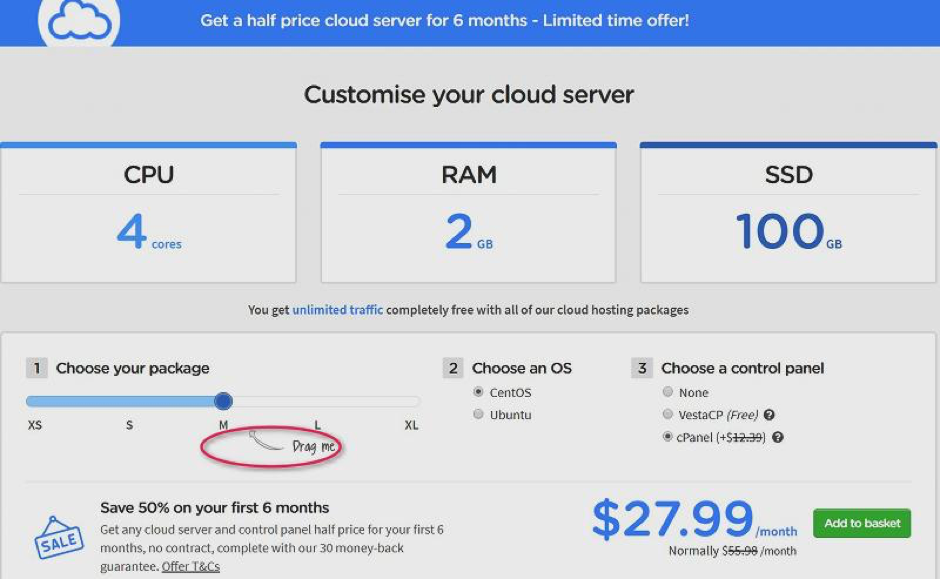Conventional Hosting is Broken
Pragmatists will say we don’t need cloud hosting, quoting the adage, ‘If it isn’t broken, don’t fix it,’ but this doesn’t apply because traditional hosting models have always had problems.
Shared Hosting
With shared hosting, you get what you pay for. If your monthly payments are the typical $3 per month, you get a server that has hundreds of websites on it and a share of processing power that can just about cope with three simultaneous users on your site. Shared hosting is cheap, but that is its sole advantage.
As soon as your site starts to impact negatively on other shared hosting accounts on the same server, your web host will ask you to ‘upgrade’ to a VPS account.
VPS Hosting
Hosting on a virtual private server (VPS) is a compromise. It is cheaper than a dedicated server but gives your site a guaranteed share of CPU and other server resources.
In VPS hosting a physical server is divided using software into a number of virtual private servers. If aanyoneof the websites on the physical server crashes or is hacked, it can affect every VPS on that server.
Dedicated Server Hosting
With a dedicated server, you are your own boss, but it comes at a high price. You can also install whatever software you choose on your dedicated hosting server and have the complete server to yourself, and your sites will not be affected by high traffic levels on others’ sites.
Cloud Hosting vs. Conventional hosting
All conventional hosting has three significant disadvantages:
- It doesn’t scale. Even with a dedicated server, when you reach the limits of what your machine is capable of, you need to upgrade to a higher spec, which will cost more
- You are tied into a 12-36 month contract
- Powerful servers are expensive
How is cloud hosting better in these crucial areas?
Scaling – If you need more processing power for a month, just order more RAM or SSD capacity to cope, and then scale things back. With cloud server hosting making it as simple as moving a slider or two, as shown below.
12-Month Contract – You pay for cloud hosting one month at a time. It couldn’t get any more flexible than that. If your user base grows, just add more server capacity; if you have a big promotion running, just upgrade your server until the demand eases off again.
High Cost – Your cloud hosting account resources are ordered one month at a time, so you don’t pay for a high-spec server to only use for three months of the year.
Choosing a Cloud Hosting Provider
Check the reviews as your first step in selecting a host. Just as with conventional hosting, reviews from customers are the best way to measure a hosting company’s service.
Forget the biased reviews from affiliates, who rarely declare openly that they will earn a commission if you buy hosting through their link. Instead look for customer satisfaction surveys with large numbers of respondents.
A good company will have a high percentage of repeat customers and impressive scores for customer service.
Decide in advance the features you require. If you don’t need geo-located servers, save money by skipping them. Up-time of 99.9% will be all most businesses need. There are other, cheaper ways of getting fall-over protection than looking for hosting that offers 100% up-time.
Look for extras like short-term discounts, website migration, and free SSL certificates but it is more critical to check actual downtime levels and the length of each outage to get a realistic idea of the package on offer.
The Short Version
With cloud hosting you have the flexibility of a dedicated server for the cost of a VPS hosting account. There is more to manage than with shared hosting, but a good hosting service will provide web guides to help.
Cloud hosting, like other cloud applications, is becoming more widely understood, paving the way for its takeover in the next 12 months.








